Service hotline
+86 0755-83044319
release time:2022-03-17Author source:SlkorBrowse:11498
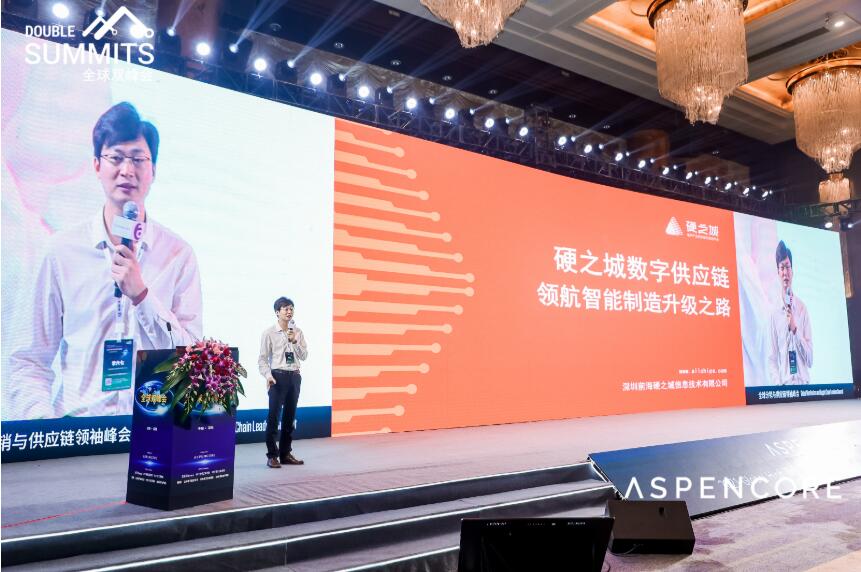
"A small and micro company with only a dozen people when it started its business has become a unicorn enterprise with a valuation of 5 billion US dollars after five years of development. Behind it is a 'double blessing' of digital supply chain and intelligent manufacturing." Shenzhen Qianhai Hardzhi Li Liuqi, CEO of City Information Technology Co., Ltd., shared his exploration and thinking on digital supply chain and intelligent manufacturing at the Global Distribution and Supply Chain Summit of the 2021 Global Dual Summit organized by AspenCore.
At present, digital transformation and upgrading has become the primary and unavoidable topic of enterprises. In the distribution industry, whether it is a traditional distributor or an emerging e-commerce platform, everyone is actively exploring digitalization.
Li Liuqi, CEO of Hard City, believes that companies should emphasize three points in the process of digital upgrading: first, digitalization is a "top-ranking project", which requires the company's senior management and leadership team to personally go into battle and do it themselves; second, digitalization must be realized end-to-end The connection of the end, including the initial inquiry to the final delivery, all links must be connected to avoid the formation of data islands; third, all elements and processes are digitized, forming a complete closed loop that cannot be broken, which is exactly what digitalization core.
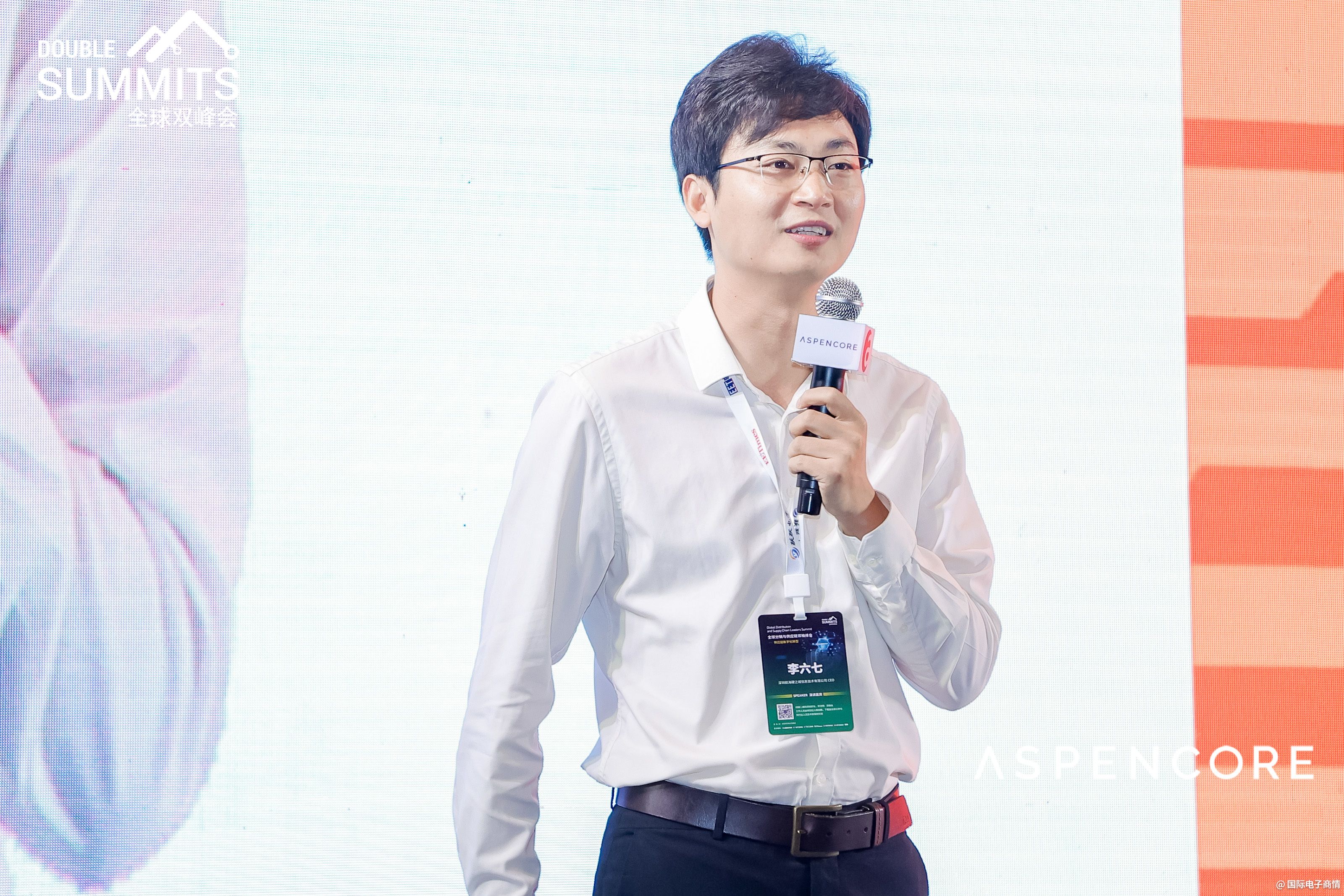
With the rise of German Industry 4.0, American Industrial Internet and Made in China 2025, the world has entered the era of intelligent computing. The traditional supply chain has begun to gradually transform into a digital and intelligent supply chain. The application of new technologies such as the Internet of Things, cloud computing, big data, and artificial intelligence has begun to "just move". The rise of a new round of scientific and technological revolution is fundamentally subverting the original system. New supply and new intelligence will become the next outlet.
Li Liuqi believes that under the complex current situation, supply chain upgrades and changes are inevitable. The opportunity to transform the traditional supply chain into a digital supply chain has come, and the opportunity belonging to China's electronics manufacturing industry is just around the corner.
Opportunity 1: Technological innovation stimulates the rapid development of small and medium-sized technology companies, creating a huge rigid demand for electronic components. For example, in medical equipment, consumer electronics, robotics, automotive electronics, Internet of Things, smart hardware and other industries, a large number of emerging small and medium technology companies are developing rapidly. Electronic components, as the core raw materials, ushered in explosive growth opportunities driven by the above industries.
Opportunity 2: The national policy inclination continues to benefit the innovation of the electronic components industry. For example, in the "Catalogue of Industrial Structure Adjustment", materials used in electronic products such as semiconductors and new electronic components are listed as encouraged industries; another example is in the "Thirteenth Five-Year Plan" Special Plan for Scientific and Technological Innovation in Advanced Manufacturing Technology Fields, Technological innovations that require strengthening of basic manufacturing capabilities, such as components, integrated circuits, etc.
Opportunity 3: The main battlefield of chips has been transferred from overseas to China, and the rise of domestic chips is just at the time. From 1970 to 2000, the semiconductor supply chain was mainly dominated by Europe and the United States; from 2000 to 2020, Japan, South Korea, and [敏感词] were equally divided; in 2020, under the circumstances of major changes in the market, the main battlefield of semiconductors Moving to China, this is a very important structural change.
Opportunity 4: Overseas blockade and the tide of "chip shortage" further stimulate industrial structural upgrading and demand for domestic chips. On the one hand, overseas high-tech industries have been blocked against China, and the chip industry has become the biggest hit area. Domestic chip brands are urgently needed to deal with the blockade and shortages. On the other hand, domestic substitution has higher requirements for supply chain capabilities, and it is necessary to break through from the three dimensions of design, equipment, production and supply, and form digital collaboration with suppliers. In addition, the supply chain of traditional electronic components is long, while new technology companies have high requirements for supply chain efficiency and flexible production capacity. The supply chain needs to have strong data accumulation and information analysis and matching capabilities.
Although there are many opportunities, Chinese local terminal enterprises still face many demand pain points.
Li Liuqi classified the massive end customers into three categories: large customers, small and medium customers, and sample customers/individuals, and presented them in a "pyramid" model.
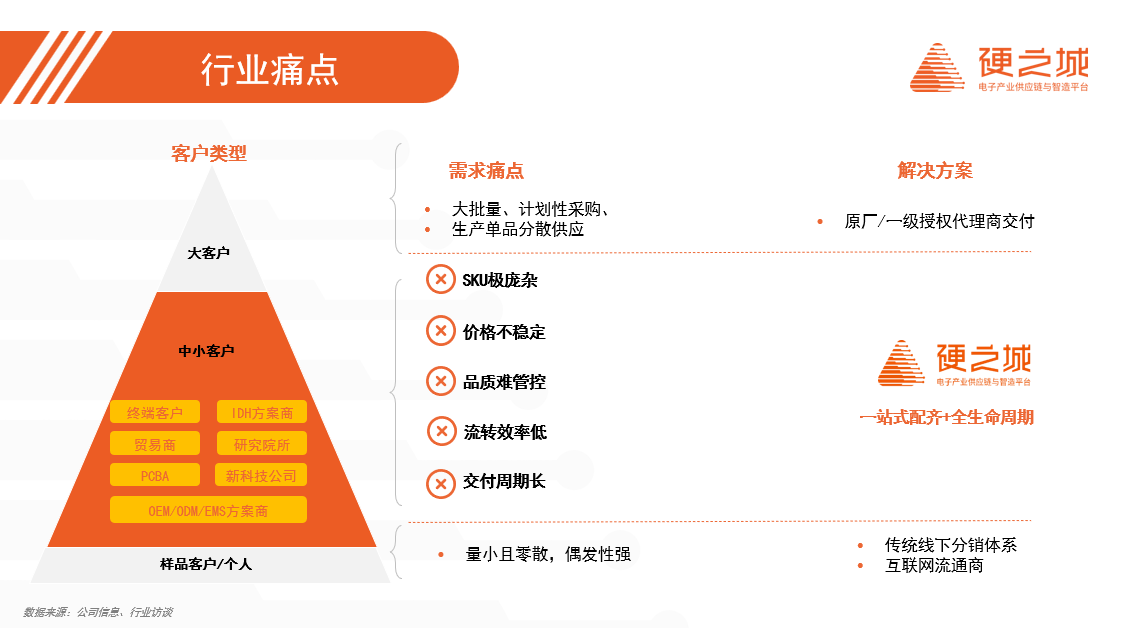
(1) Large-scale terminal enterprises belong to large-scale, planned purchases, and the production of single products is scattered and supplied; the original factory/first-level authorized agent is required to deliver them stably.
(2) There are many small and medium-sized enterprises located in the middle of the pyramid, and there are many types and types, and they face different pain points, such as extremely complex SKUs, unstable prices, difficult quality control, low circulation efficiency, and long delivery cycles.
(3) There are also sample customers or personal purchases. They have the characteristics of small purchase volume, scattered, and strong occasional; traditional offline distribution systems and Internet distributors are required to provide supply chain services for them.
Therefore, in Li Liuqi's view, a large number of small and medium customers are the main force in digital transformation and upgrading.
The first reason is that these small and medium-sized enterprises focus on the field of mid-to-high-end products, and the innovative hardware can be interconnected. They are China's new hardware companies and represent the future era of intelligence. A large number of small and medium-sized companies in fields such as robotics, AIoT, industrial interconnection, and new energy vehicles are growing at a very high rate.
The second reason is that a large number of small and medium-sized companies have no right to speak in the supply chain, manufacturing and other links. We cannot expect small and medium-sized enterprises to quickly establish these complex and necessary long-boards. They often need to rely on external help to survive the small and medium-sized enterprises. The stage of scale, gradually becoming a medium and large company.
The third reason is that the core competitiveness of small and medium-sized enterprises has undergone fundamental changes. It is no longer the product price and production itself, but the hardware and software design capabilities, algorithm capabilities, brands, channels, etc. Therefore, these companies will definitely invest their core resources into their core competitiveness, so as to hand over the supply chain and manufacturing to more efficient, quality-assured, delivery-guaranteed, and professional companies.
As a result, Hard City will focus on small and medium-sized hardware enterprises, providing them with one-stop complete + full life cycle services, helping small and medium-sized enterprises to show explosive growth.
Li Liuqi also shared a real case: an intelligent robot company served by Hard City. When it first came into contact in 2016, it was just a student start-up company with more than a dozen people. It had no resources, no supply chain, and only a steady stream of innovative ideas. ; By 2021, the entire company will be valued at $5 billion and become a unicorn in this field!
"It's really hard to imagine that a company has grown from a startup to a unicorn with a valuation of 30 billion yuan in five years!" Li Liuqi said with emotion, "but we believe that the success of this company is not a matter of For example, it is a typical example of the booming new hardware company in China.”
So, how does Hard City help SMEs to realize digital supply chain?
According to Li Liuqi's summary, a complete hardware manufacturing process requires 6 steps: BOM disassembly, BOM solution output, one-stop delivery of components, flexible PCB production, SMT patch, and one-stop delivery of PCBA intelligent manufacturing.
First, the bottom layer of the above steps must be digitized.
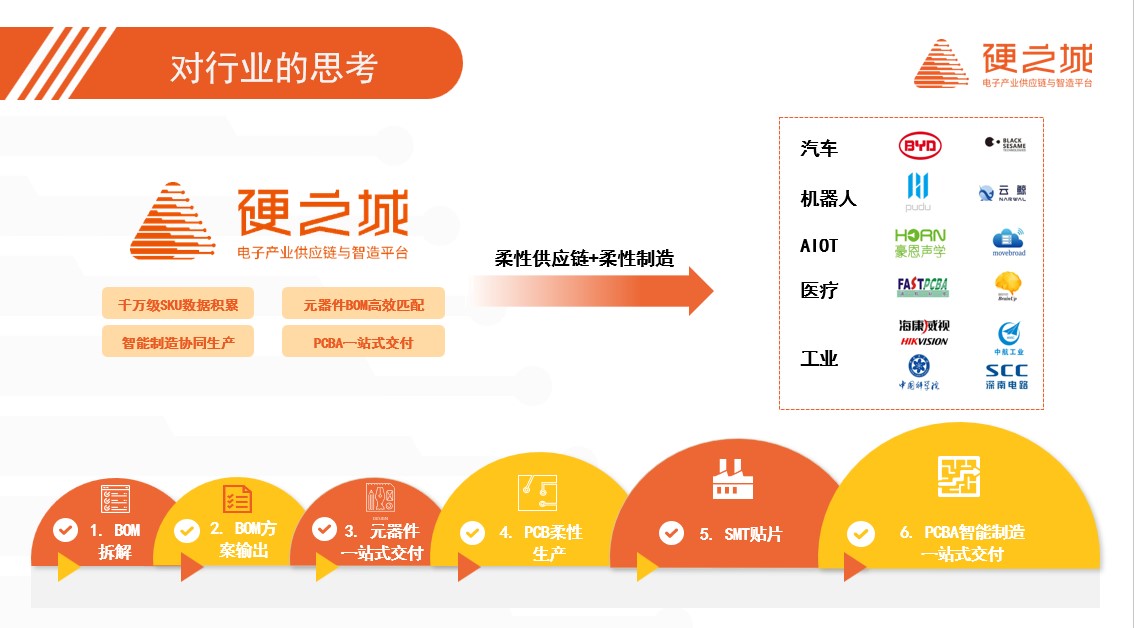
Hard City has established its own product library, commodity library, knowledge base, and algorithm. The purpose is that when a hardware company provides a BOM, the Hard City platform can be processed by SaaS tools after big data and AI processing in three seconds. Complete scheme of output BOM table within. At present, one function is to convert the BOM table into the actual purchase table, which is convenient for actual purchase; the other function is to automatically output the BOM plan and realize the overall project delivery. Give customers a complete PCBA.
Data shows that Hard City has cooperated with nearly 4,000 suppliers, and has been authorized by more than 200 original factories, and its covered SKUs have 45 million in the library. Over 10 billion stock replacement products are currently covered.
Second, fast delivery.
Any hardware company will go through these four stages: small batches of samples, batches, outbreaks, and maturity. Among them, the traditional "fast delivery" is understood as "quick delivery of a certain material", but Li Liuqi does not think this is the core requirement of hardware companies. Because whenever a material cannot be delivered quickly, the previously delivered material will become inventory.
Therefore, Li Liuqi defines "fast delivery" as the rapid delivery of the overall project PCBA, not only a single material, as long as the customer assembles, adds a shell, and labels, it will become his own product. In order to achieve this goal, Hard City built a new factory to produce and process PCBA.
In contrast, the traditional delivery cycle for small batches: 1-2 weeks for quotation + 2-4 weeks for spot delivery / 8-12 weeks for futures delivery; while the delivery cycle for small batches in Hard City: 3 hours for quotation + 3-7 weeks for spot delivery Days/Futures Just In Time.
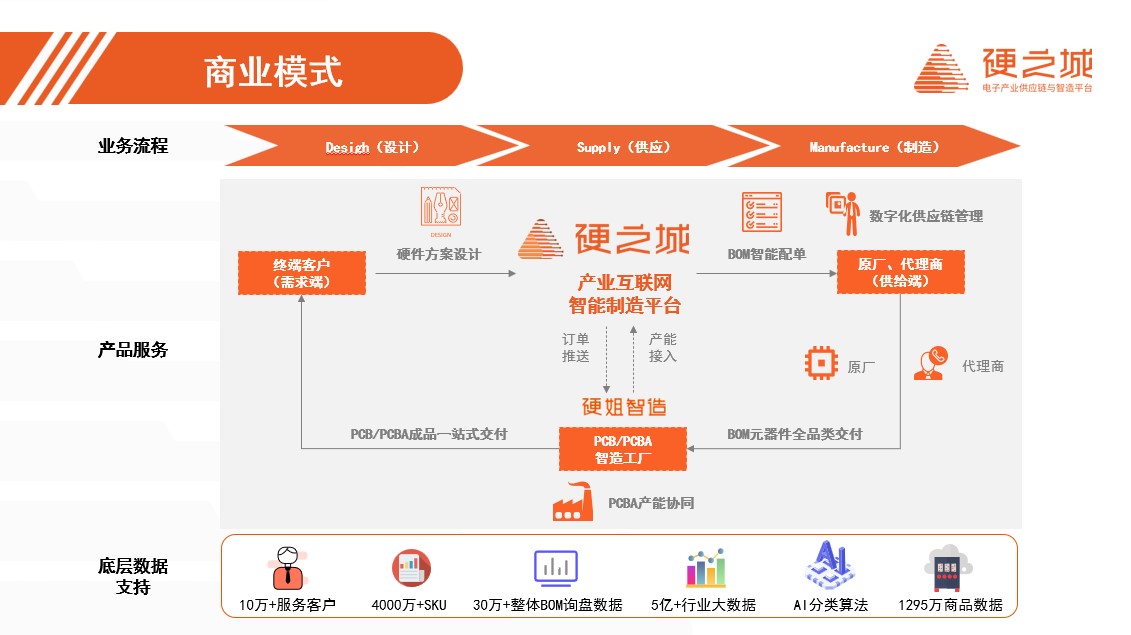
As for the newly built PCBA factory in Hard City in 2021, Li Liuqi named it "Hard Sister Smart Manufacturing Center".
He explained: "We divide intelligent manufacturing into three sections: one-stop component delivery, PCB, and SMT. The logic is to digitally transform each link, and then open up all links to form a complete closed loop. This will greatly improve Improve the efficiency of the entire hardware manufacturing, the entire manufacturing process can be shortened from the traditional two months to the current two weeks."
Of course, it is difficult to describe the more innovative functions of "Hard Sister Smart Manufacturing" in a few words. Li Liuqi revealed the secrets of the industry in the form of diagrams from the aspects of process and technology.
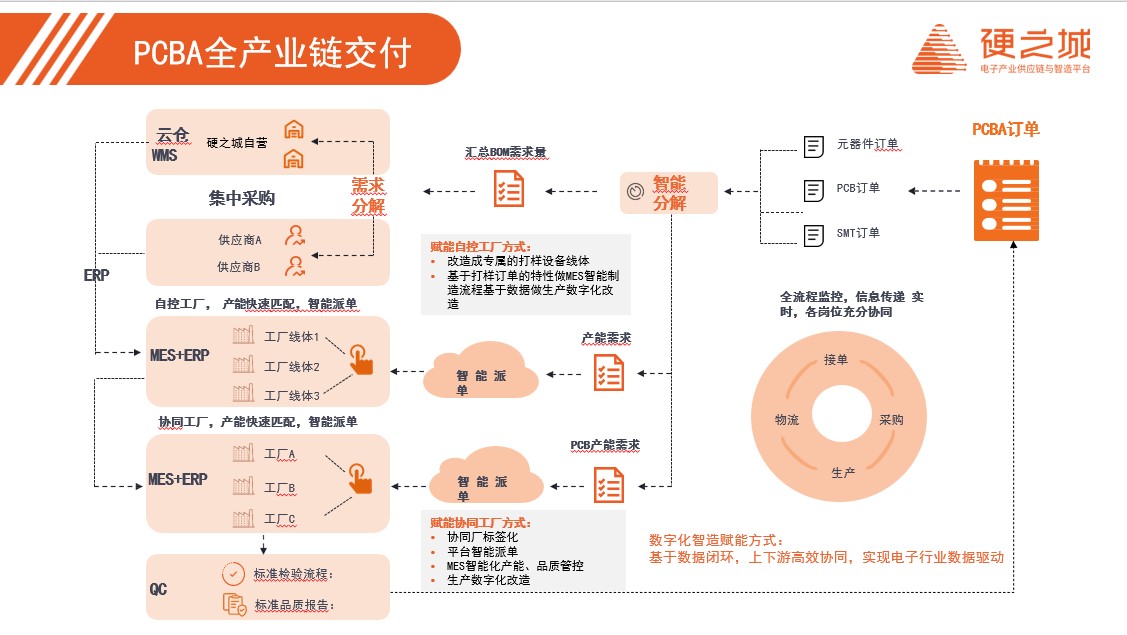
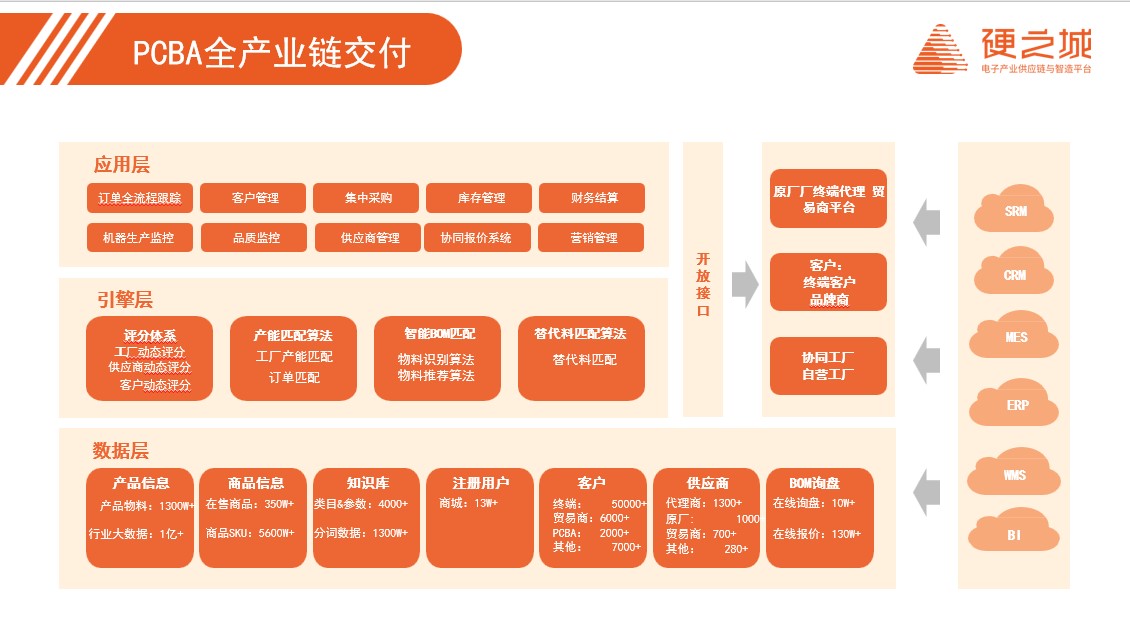
In general, Hard City’s approach is: digitizing a large number of upstream suppliers; digitizing a large number of downstream partners’ factories; third, opening up the DSM system in the middle to achieve a complete closed loop
summary
At the end of the speech, Li Liuqi concluded: "Hard City was established in 2015 and launched in 2016, and its positioning is very clear: first, it provides one-stop component supply and manufacturing for hardware companies, and finally delivers a complete PCBA; The second is to serve small and medium-sized electronic component companies. At present, the platform has 100,000 registered users and 10,000 customers directly. At the same time, Hard City has also been recognized by capital since 2016, and will receive relevant financing every year, and recently announced 2021 New round of financing information.”
Disclaimer: This article is reproduced from "Momo Zhong". This article only represents the author's personal opinion, not the opinion of Sacco Micro and the industry. It is only for reprinting and sharing, and supports the protection of intellectual property rights. Please indicate the original source and author for reprinting. If there is any infringement Please contact us to remove.









Site Map | 萨科微 | 金航标 | Slkor | Kinghelm
RU | FR | DE | IT | ES | PT | JA | KO | AR | TR | TH | MS | VI | MG | FA | ZH-TW | HR | BG | SD| GD | SN | SM | PS | LB | KY | KU | HAW | CO | AM | UZ | TG | SU | ST | ML | KK | NY | ZU | YO | TE | TA | SO| PA| NE | MN | MI | LA | LO | KM | KN
| JW | IG | HMN | HA | EO | CEB | BS | BN | UR | HT | KA | EU | AZ | HY | YI |MK | IS | BE | CY | GA | SW | SV | AF | FA | TR | TH | MT | HU | GL | ET | NL | DA | CS | FI | EL | HI | NO | PL | RO | CA | TL | IW | LV | ID | LT | SR | SQ | SL | UK
Copyright ©2015-2025 Shenzhen Slkor Micro Semicon Co., Ltd